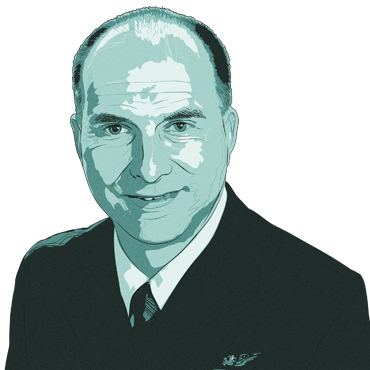Trent Janda: Making electronic medical records a reality

The Coast Guard is poised to begin deploying its Integrated Health Information System, thanks in large part to the drive of the service's chief medical information officer.

When Dr. Trent Janda walks into Lt. Cmdr. Mark Williams' office at the beginning of the week, Williams knows he had better be on his toes.
"Nothing scares him more than when I come in Monday morning and say, 'Hey, you know, I was thinking,...'" Janda said.
Janda is the project manager for the Coast Guard's Integrated Health Information System (IHiS), and Williams is the technical leader. The two men meet nearly every week, and after their meetings, Williams often reaches out to the IT department to see if Janda's newest discovery can be folded into IHiS.
"It's usually my job to run that to ground, get with our engineers and see if it's technically feasible and cost-effective," Williams said. "I think sometimes in the government, we're real hesitant or resistant to change so it's great to actually work with someone who's always looking forward and not afraid of new technological advances."
Incorporating the newest technology into IHiS is always on Janda's mind. But it's not Janda the gear-head who keeps striving to perfect a health care management system that will integrate civilian and non-civilian records; it's Janda the physician.
Besides reaching the rank of captain in the U.S. Army during eight years of service, Janda became a licensed physician in 1999 and has practiced as a family physician since 2002.
"I'm a provider myself, and I know it's frustrating to keep using a system that doesn't do what you need it to do," Janda said. "You don't feel like you can deliver the care that you want to deliver. I think we have a lot of really dedicated government people, both active-duty as well as civilian, who really want to do a good job taking care of our people, but a lot of times, we get these tools that just don't meet our needs and we never get a chance to really be part of the solution."
Information silos are a challenge for military health care. For example, service members' primary health records are not integrated with the systems that handle health assessments before and after deployment. It is a challenge Janda is determined to address.
During his time in the Army, he gained extensive experience with the Defense Department's AHLTA electronic medical record (EMR) system. When he came to the Coast Guard in 2008, he was initially tasked with integrating the Coast Guard into AHLTA, which DOD is now seeking to replace.
"Once we started that process, then we realized it wasn't just the [EMR system] we were lacking," Janda said. "We were lacking a document management system. We were lacking a credentialing system, and as we went along, we kept on identifying old systems either that were missing or needed to be replaced, and before long we ended up with this big Integrated Health Information System."
But he didn't stop there. Janda's team ultimately joined forces with the State Department after he and one of State's chief medical information officers realized they were looking for similar solutions. Both of them needed to digitize health records and manage care provided by outside organizations. In 2011, officials signed an interagency agreement to share IHiS for their civilian and military beneficiaries.
Two elements set IHiS apart from other attempts at military EMRs. First, unlike AHLTA, IHiS was not built by an agency. Instead, Coast Guard and State officials tapped Epic Systems and other contractors, including Leidos and SAIC, to create a foundation on which they could build. They chose companies that have worked with HMOs and other large institutions.
"Given that the Coast Guard's pretty small, if they're successful at such a large enterprise, then our risk is pretty low," Janda said.
Second, the type of care the Coast Guard and State provide differs from what the Army, Navy and Air Force provide. Whereas DOD has specialists and resources to perform inpatient care, the Coast Guard focuses on primary care and refers beneficiaries for most other medical services.
"We have a good percentage of people who never come into our facility who use their Tricare benefit...and they see a private physician," Janda said. "But we still pay for that care, and we're still responsible for their well-being."
Likewise, the State Department mainly coordinates rather than provides care for its beneficiaries abroad. For instance, roughly 30 percent of State's overseas employees are active military members who are responsible for security at U.S. embassies. Coordinating that care is complicated by the fact that the health records of those military members and other State beneficiaries, such as Foreign Service officers and their families, are still maintained as paper documents.
After IHiS starts its piecemeal launch in July -- and Williams said he hopes it will be fully deployed in the next year -- users will be able to access their health records and communicate with their doctors from any location. And all the relevant agencies will be better able to manage their employees' medical care.
By capturing all that information and sharing it with DOD and the Department of Veterans Affairs, "it's a virtual lifetime electronic record," Janda said. "We're all contributing to the same electronic record."
So although it might be unclear whether to address Janda as doctor, captain or one of several other current job titles, he is undoubtedly the driving force behind IHiS, said Dan Fielden, a project manager at Leidos.
"This whole thing is really Dr. Janda's vision, and we're just helping him realize it," Fielden said. "He's always thinking ahead [to] what is the best technology we can use, which is both a blessing and a curse. Sometimes [we] start out thinking we're going to go down this path and then we discover a new piece of technology that will be more effective and more efficient."


